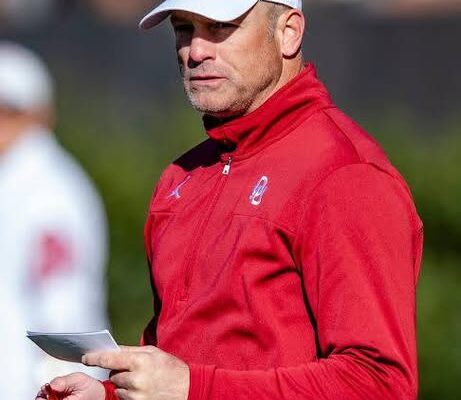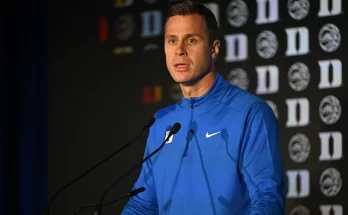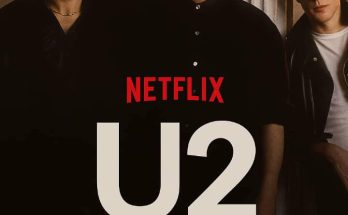There’s a palpable buzz surrounding the Oklahoma Sooners’ 2026 football recruiting class, and it’s being hailed by many as one of the best recruiting campaigns in recent memory. The common refrain among analysts and fans alike is that “this is traditional Oklahoma recruitment,” suggesting a return to the dominant recruiting prowess that defined the program for much of the 21st century. Indeed, it almost seems as if Brent Venables is in charge of hiring again, not just recruiting, given the strategic and meticulous approach being employed to build the future of Oklahoma football, particularly as they navigate their new reality in the Southeastern Conference (SEC).
After a challenging first year in the SEC in 2025 (a 6-7 overall record, 2-6 in conference play), the pressure on Venables to recruit at an elite level has intensified. The SEC demands not just talent, but specific types of talent – particularly in the trenches – and a depth that few conferences can match. The early returns for the 2026 class suggest Venables and his staff are rising to that challenge with remarkable success, demonstrating a blend of traditional Oklahoma appeal and a refined, SEC-tailored strategy.
As of early July 2025, the Oklahoma Sooners’ 2026 class, with 14 hard commits, is trending upwards in national rankings. While the overall class ranking might fluctuate (currently around 21st nationally and 10th in the SEC by 247Sports, though poised to jump significantly with expected additions), the quality and fit of the individual commits are what truly excite the coaching staff and the fanbase.
What makes this class feel like a return to “traditional Oklahoma recruitment”?
- Targeting Elite Quarterback Talent: Oklahoma has a storied history of elite quarterback play, and the 2026 class continues this tradition. The commitment of Bowe Bentley (Celina, TX), a highly-rated dual-threat quarterback, is a prime example. Bentley immediately became the Sooners’ highest-rated commit and brings a dynamic skillset with over 3,400 passing yards and 50+ touchdowns, plus nearly 1,000 rushing yards and 16 scores in his junior season, along with a state championship. This signals OU’s continued ability to attract top-tier signal-callers, a cornerstone of their offensive identity.
- Dominance in the Trenches: The biggest shift and perhaps the most “traditional” aspect of this class, given OU’s historical success with strong offensive and defensive lines, is the renewed emphasis on the offensive and defensive lines. Venables has been vocal about the necessity of winning in the trenches in the SEC. The commitment of 4-star offensive tackle Deacon Schmitt (Windsor, CO), the top-ranked player in Colorado, is a significant statement. The Sooners reportedly prioritized him heavily, bringing him in as their only official offensive tackle visit this summer. On the defensive side, securing pledges from promising edge rushers like Matthew Nelson (Bryant, AR) and Daniel Norman (Fort Lauderdale, FL), along with defensive linemen like Brian Harris (Jacksonville, FL), shows a clear intent to beef up the front seven, a Venables hallmark.
- National Footprint with Texas Focus: While Oklahoma has always recruited nationally, its bread and butter remains Texas. The 2026 class, with three commits from Texas (including QB Bowe Bentley and TE Ryder Mix), demonstrates that the Sooners are maintaining a strong presence in the Lone Star State, despite Texas now being a fellow SEC member. However, the class also shows an expanded national footprint, with commits from California (WR Daniel Odom, CB Derrick Johnson II), Arkansas (LB Jakore Smith, Edge Matthew Nelson), Florida (DL Brian Harris, Edge Daniel Norman), and Arizona (LBs Beau and Niko Jandreau – twin brothers). This geographic diversity is a necessity in the SEC.
- Targeting “Fits” Over Just Stars: Venables’ philosophy, often articulated by figures like General Manager Jim Nagy, emphasizes recruiting players who “fit” the program’s culture and scheme, even if their external recruiting rankings aren’t sky-high. This doesn’t mean shying away from 4- and 5-stars, but it suggests a more discerning eye. This approach mirrors the meticulous roster building often seen in professional sports, where a player’s character, work ethic, and specific skill set for a role are prioritized. This selective, purposeful approach ensures better long-term retention and development, reminiscent of the traditional “built-from-within” mentality.
- Defensive Talent Infusion: As a defensive-minded head coach, Venables’ success will hinge on his ability to recruit and develop elite defensive talent. The 2026 class is heavily weighted towards defense, with seven defensive commits already. This includes linebackers (Jakore Smith, Beau Jandreau), edge rushers (Matthew Nelson, Daniel Norman), defensive linemen (Brian Harris), and defensive backs (Derrick Johnson II, Niko Jandreau). This focus is critical for competing against SEC offenses.
- Early Commitments and Momentum: The rapid pace of commitments for the 2026 class (14 commits by early July 2025) suggests strong early momentum. This kind of early success is characteristic of strong recruiting classes, allowing the coaching staff to focus on a smaller group of elite remaining targets and build relationships. The commitment of TE Ryder Mix as early as June 2024 for the 2026 class shows how early and effectively the Sooners are establishing relationships.
The phrase “Brent Venables is in charge of hiring again” isn’t literal, but it speaks to a deeper truth about his approach to building the roster:
- Roster Management as a Business: In the NIL and transfer portal era, college football roster management has become akin to managing a professional sports franchise. Coaches must act as CEOs, making strategic “hiring” (recruiting) and “firing” (transfer portal departures) decisions to maintain a healthy and competitive roster. Venables, with the support of figures like Jim Nagy (who joined as General Manager with two decades of NFL experience), is approaching this with an NFL-style grading scale, focusing on “projected impact and value” over just star ratings. This disciplined, long-term view is essential for sustainable success.
- Culture as a Foundation: Venables has always emphasized culture, discipline, and player development. He’s not just recruiting athletes; he’s recruiting individuals who fit the demanding culture he’s trying to instill. This is a “hiring” process for the right personalities and work ethics, not just raw talent. The jandreau twins, for example, committed to Oklahoma a month apart, indicating a strong connection and belief in the program.
- Building for the SEC: The transition to the SEC is a massive undertaking. Venables is not just recruiting for the Big 12; he’s specifically “hiring” players who possess the physicality, mental toughness, and skill sets required to compete against the best in the nation, week in and week out. His focus on the trenches, in particular, is a direct response to the demands of SEC play. Commissioner Greg Sankey’s recent praise for Oklahoma’s “fundamentals” in their first SEC year also underscores that the league sees OU’s approach as sound.
- Holistic Development: The goal isn’t just to win games, but to develop young men. The addition of a figure like Barry Sanders as Executive Chairman (a recent development, though not explicitly linked to this “hiring” analogy, it perfectly fits the theme) exemplifies this. Sanders’s presence provides mentorship and guidance that goes beyond the football field, making the program incredibly attractive to recruits who are thinking about their long-term futures.
The Oklahoma Sooners’ 2026 recruiting class is more than just a collection of highly-rated prospects; it’s a statement. It’s a clear indication that Brent Venables and his staff are systematically and strategically building a roster designed to thrive in the SEC. This meticulous, “hiring”-like approach, blending traditional Sooners recruiting strengths with modern roster management demands, points to a promising future for Oklahoma football.



